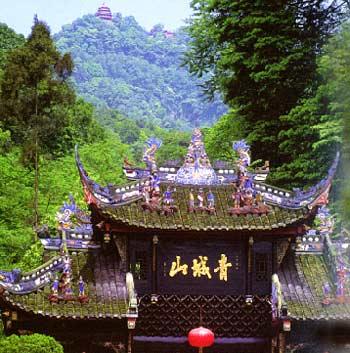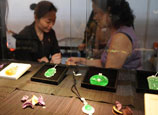
 |
| Mt. Qingcheng (CNTV) |
Date of Inscription: 2000
Assessment of the World Heritage Committee
Mt. Qingcheng is one of the places where Taoism originated and also a renowned Taoist mountain. The Jianfu Palace was constructed in the Tang Dynasty and is quite large in scale. The Natural Picture Gallery is a loft built in the Period of Emperor Guangxu in the Qing Dynasty. The Heavenly Master Cave is the place where tourists can see the statues of the “Heavenly Master” Zhang Daoling and his 30th generation descendent “Xujing Heavenly Master.” The present Taoist temples were built at the end of the Qing Dynasty, and they are not only large in scale and delicate in design, but also contain a lot of precious cultural relics and ancient trees.
Built in the 3rd century B.C. on the Minjiang River west of the Chengdu Plain in Sichuan Province, the Dujiangyan is a large-scale water conservancy project constructed by the working people led by Li Bing and his son. Li Bing was the governor of Shu Prefecture during the Qin Kingdom in China’s Warring States Period. Up to now, the Dujiangyan is the oldest and the only large-scale water conservancy project that features “drawing water without a dam” in the world. It has been in use for over 2,200 years and is still in use today. This project built by Li Bing can benefit people for thousands of years and is really one of the greatest water conservancy achievements of the world.
Chinese name: Qing Cheng Shan Yu Du Jiang Yan
English name: Mt. Qingcheng and Dujiangyan
Based on the standards C(II),(IV),(VI) for selecting cultural heritage, Mt. Qingcheng and Dujiangyan were listed in the World Heritage List in 2000.

















 Rainstorms flood more than 10,000 cars in underground garages in Wuhan
Rainstorms flood more than 10,000 cars in underground garages in Wuhan


![]()
